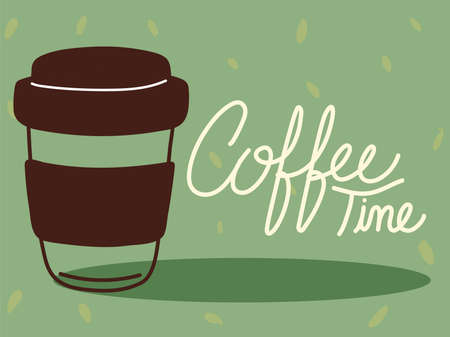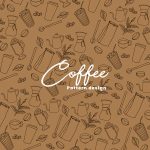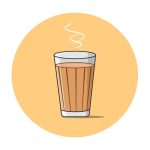1. Understanding Extraction: The Heart of Coffee Brewing
When it comes to brewing a great cup of coffee, everything revolves around one key process: extraction. Extraction is the process of pulling out flavors and compounds from coffee grounds using water. The way you control this process—through water temperature, grind size, and brew time—can make or break your cup.
What Is Coffee Extraction?
Think of extraction like steeping tea. When hot water meets coffee grounds, it dissolves soluble compounds that give coffee its flavor, aroma, and body. These include acids, sugars, oils, and bitter compounds. But not all these elements extract at the same rate. That’s why timing and technique matter so much.
The Stages of Extraction
Coffee extraction generally happens in three stages:
- First: Acids and fruity notes are extracted early.
- Second: Sugars and sweet flavors come next.
- Third: Bitter compounds are extracted last.
If you under-extract (too short brew time or too coarse grind), youll mostly get sourness. If you over-extract (too long brew time or too fine grind), bitterness will dominate.
How Key Variables Affect Extraction
The magic of brewing lies in balancing three main variables: water temperature, grind size, and brew time. Heres how each impacts the extraction process:
| Variable | Effect on Extraction | If Too Low/Short/Coarse | If Too High/Long/Fine |
|---|---|---|---|
| Water Temperature | Affects how quickly flavors dissolve from grounds. | Sour, under-extracted taste | Bitter, over-extracted taste |
| Grind Size | Determines surface area exposed to water. | Weak, underwhelming flavor | Muddy or overly bitter taste |
| Brew Time | The duration water is in contact with coffee grounds. | Sour or watery result | Bitter and harsh notes |
Why Balance Matters
The goal is to extract just the right amount—usually around 18–22% of the coffees soluble material—for a well-balanced cup. This is often called “optimal extraction.” If any of the three variables are off, it can throw your whole brew out of balance.
Pro Tip:
If your coffee tastes off, try adjusting just one variable at a time. For example, if its too bitter, try shortening the brew time or using a coarser grind before changing the temperature.
Understanding how extraction works gives you the power to tweak your brewing method for better results—and thats where the real fun begins in crafting your perfect cup.
2. Water Temperature: Finding the Sweet Spot
Water temperature might seem like a small detail, but it plays a huge role in how your coffee tastes. When you brew coffee, youre extracting flavors from the ground beans. The temperature of the water affects which flavors are pulled out — and how much of them end up in your cup.
Why Temperature Matters
If your water is too cool, you might under-extract the coffee, meaning youll get weak or sour flavors. On the flip side, if your water is too hot, you could over-extract the coffee, resulting in bitter or harsh notes. Striking the right balance helps highlight the coffee’s natural sweetness, acidity, and complexity.
The Ideal Temperature Range
Most professional baristas and coffee scientists agree that the sweet spot for brewing lies between 195°F and 205°F (90°C to 96°C). This range offers the best extraction without burning the grounds or leaving flavor behind.
Recommended Water Temperatures by Brew Method
| Brew Method | Recommended Water Temperature |
|---|---|
| Drip Coffee Maker | 195°F – 205°F (90°C – 96°C) |
| Pour Over (e.g., Chemex, V60) | 200°F (93°C) |
| French Press | 195°F – 200°F (90°C – 93°C) |
| AeroPress | 175°F – 185°F (80°C – 85°C) for brighter taste 195°F – 205°F (90°C – 96°C) for bolder taste |
| Espresso Machine | 190°F – 196°F (88°C – 91°C) |
Taste Differences by Temperature
Even a few degrees can change what you taste in your cup. Here’s a simple breakdown:
| Temperature Range | Taste Characteristics |
|---|---|
| Below 190°F (88°C) | Sour, underdeveloped flavors; weak body |
| 195°F – 205°F (90°C – 96°C) | Balanced flavor, optimal extraction; highlights origin characteristics like fruity or nutty notes |
| Above 205°F (96°C) | Bitter, over-extracted flavors; can burn delicate compounds in light roasts |
How to Control Water Temperature at Home
If You Have a Kettle with Temperature Control:
This is the easiest way — just set it to your desired temp and go.
If You Don’t Have a Thermometer:
A simple trick is to bring water to a boil and then let it sit for about 30 seconds off heat. It should drop into that perfect range of around 200°F (93°C).
Pro Tip:
If youre brewing lighter roast beans with more acidity, aim closer to 203–205°F (95–96°C). For darker roasts that are more bitter or bold, try around 195–198°F (90–92°C).
Finding your ideal brew temperature can take a little experimentation, but once you dial it in, youll be amazed at how much better your coffee can taste.
![]()
3. Grind Size Matters: How Texture Impacts Flavor
When it comes to brewing a great cup of coffee, the size and consistency of your grind can make or break the flavor. Whether you’re using a French press, pour-over, or espresso machine, the grind size directly affects how water interacts with the coffee grounds — influencing extraction speed, flavor intensity, and even mouthfeel.
Why Grind Size Is So Important
Coffee brewing is all about extracting the right compounds from ground beans. A finer grind increases the surface area exposed to water, which speeds up extraction. On the other hand, a coarser grind slows down extraction because theres less surface area in contact with water. If your grind is too fine or too coarse for your brewing method, you’ll end up with either over-extracted (bitter) or under-extracted (sour) coffee.
Grind Size and Brewing Method
Different brewing methods require specific grind sizes for optimal results. Here’s a quick reference guide:
| Brewing Method | Recommended Grind Size | Texture Comparison |
|---|---|---|
| French Press | Coarse | Similar to sea salt |
| Cold Brew | Extra Coarse | Like peppercorns |
| Drip Coffee Maker | Medium | Like beach sand |
| Pourover (e.g., Chemex) | Medium-Coarse | Slightly rougher than sand |
| Aeropress (short brew time) | Fine | Sugar-like texture |
| Espresso Machine | Very Fine | Powdery like flour |
| Moka Pot/Stovetop Espresso | Fine to Medium-Fine | Slightly finer than table salt |
The Role of Consistency in Grinding
Beyond size, consistency matters just as much. Uneven grinds — where some particles are fine and others are coarse — lead to uneven extraction. This means some parts of your coffee will be over-extracted while others remain under-extracted, resulting in muddled or imbalanced flavors. Using a burr grinder instead of a blade grinder can help achieve a more uniform grind, giving you better control over taste.
Taste Profiles Based on Grind Size Errors:
| Error Type | Taste Result | Cause & Fix |
|---|---|---|
| Too Fine for Method | Bitter, harsh flavor | Over-extraction; use a coarser grind next time. |
| Too Coarse for Method | Sour, weak taste | Under-extraction; try a finer grind. |
| Inconsistent Grind Size | Muddy or unbalanced cup | Use a burr grinder for uniformity. |
The bottom line? Paying attention to your grind size and its consistency is one of the easiest ways to improve your home-brewing game. The right texture unlocks deeper flavors and ensures every sip hits the mark.
4. Timing is Everything: Dialing in Brew Time
When it comes to brewing coffee, time isn’t just a number on the clock—its one of the most important variables in crafting a balanced cup. Brew time works hand-in-hand with water temperature and grind size to determine how much flavor is extracted from your coffee grounds. If you get the timing wrong, even the best beans and perfect grind won’t save your brew.
Understanding Extraction
To understand why timing matters, let’s talk about extraction. Extraction refers to how much of the coffees soluble compounds are pulled out during brewing. These compounds include acids, sugars, and bitter elements that contribute to the overall flavor profile.
Under-Extraction vs Over-Extraction
| Type | Brew Time | Taste | Common Causes |
|---|---|---|---|
| Under-Extracted | Too Short | Sour, sharp, weak | Grind too coarse, water too cool, brew time too short |
| Ideal Extraction | Balanced | Sweet, complex, balanced acidity and bitterness | Proper grind size, correct temp, right brew time |
| Over-Extracted | Too Long | Bitter, dry, hollow | Grind too fine, water too hot, brew time too long |
The Sweet Spot: Matching Time with Grind and Temperature
Brew time doesn’t work in isolation—it must align with your grind size and water temperature. For example:
- If youre using a coarse grind (like for French press), youll need a longer brew time—typically 4 to 5 minutes—to extract enough flavor.
- A medium-fine grind (used in pour-over methods) usually requires 2.5 to 4 minutes.
- An espresso uses a very fine grind but brews in just 25–30 seconds due to high pressure.
If your coffee tastes off, adjusting your brew time can help fix it—but only if its paired with changes to grind size or temperature. Brewing too fast with cold water or coarse grounds can leave your cup under-extracted. On the flip side, brewing too long with hot water or fine grounds can lead to bitterness.
Troubleshooting Common Timing Issues
If youre not sure where to start, here are some quick fixes based on what your coffee tastes like:
| If Your Coffee Tastes… | Try This Adjustment |
|---|---|
| Sour or weak | Brew longer or use finer grind; check that water is hot enough (195–205°F) |
| Bitter or harsh | Brew shorter or use coarser grind; try slightly cooler water (closer to 195°F) |
| Dull or flat | Tweak all three variables—grind slightly finer, increase temp slightly, adjust time by 15–30 seconds |
Nailing down the right brew time takes some trial and error, but once you find that sweet spot between grind size, temperature, and timing, you’ll be rewarded with a clean, flavorful cup every single time.
5. Putting It All Together: Crafting Your Perfect Brew
Now that you understand how water temperature, grind size, and brew time affect the taste of your coffee, its time to put that knowledge into action. Making great coffee at home doesnt require fancy equipment—just a little science and some trial and error.
Adjusting Variables for Better Taste
Here’s a quick guide to help you tweak your brew based on what youre tasting in your cup:
| Issue | Possible Cause | How to Fix It |
|---|---|---|
| Bitter taste | Too hot water, too fine grind, or over-extraction (brewing too long) | Use slightly cooler water (195–200°F), coarsen your grind, or shorten your brew time |
| Sour taste | Water too cool, grind too coarse, or under-extraction (brewing too short) | Increase water temp closer to 200–205°F, make grind finer, or extend brew time |
| Flat or dull flavor | Poor extraction due to inconsistent grind size or stale beans | Use freshly ground beans and a burr grinder for consistency; check roast date on beans |
| Watery or weak coffee | Too coarse grind or not enough coffee grounds used | Use a finer grind or increase the coffee-to-water ratio (try 1:15 ratio as a starting point) |
The Ideal Starting Point
If youre just beginning your home brewing journey, here’s a solid baseline:
- Water Temperature: 200°F (just off the boil)
- Grind Size: Medium-coarse for pour-over; medium-fine for drip machines; fine for espresso; coarse for French press
- Brew Time: 2–4 minutes for pour-over; 4 minutes for French press; 25–30 seconds for espresso
- Coffee-to-Water Ratio: Start with 1:15 (e.g., 20g coffee to 300ml water) and adjust to taste
Troubleshooting Like a Pro
If something tastes off, resist the urge to toss the whole pot—try changing one variable at a time. Think like a scientist: take notes, observe changes, and keep experimenting. For example:
If it’s too bitter:
- Brewed too long? Try a shorter extraction time.
- Your grind might be too fine—go a bit coarser next time.
If it’s too sour:
- The water may be too cool—aim closer to 205°F.
- You could be under-extracting—either extend the brew time or make your grind finer.
Your Brew Journal
Keeping track of your variables can really help. Use a simple chart like this to dial in your perfect cup:
| Date | Coffee Type | Grind Size | Water Temp (°F) | Brew Time (min) | Taste Notes |
|---|---|---|---|---|---|
| 04/05/2024 | Ethiopian Light Roast | Medium-Fine | 200°F | 3:30 | A bit sour – try hotter water next time |
| 04/06/2024 | Colombian Medium Roast | Medium-Coarse | 203°F | 4:00 | Smooth and balanced – keeper! |
The more you experiment and refine your method, the better your coffee will taste. With these tools and tips, you’re well on your way to crafting the perfect brew every morning.


